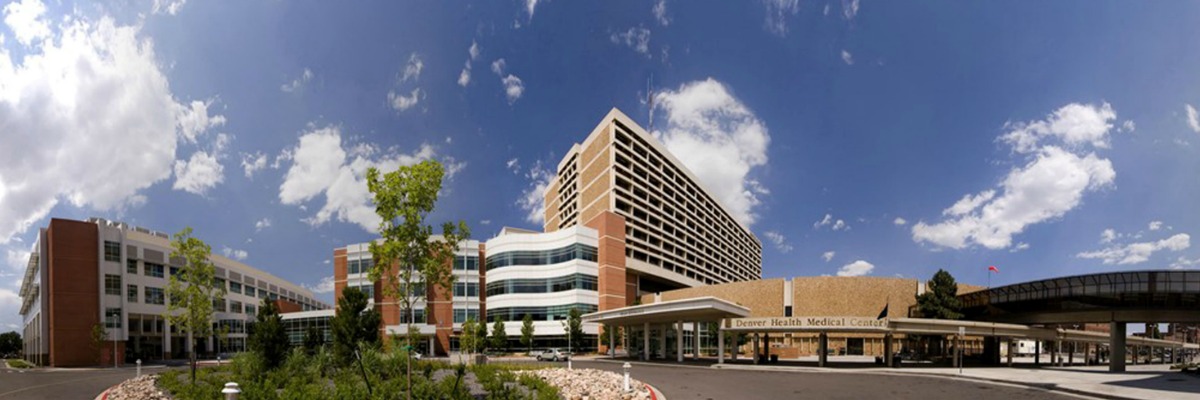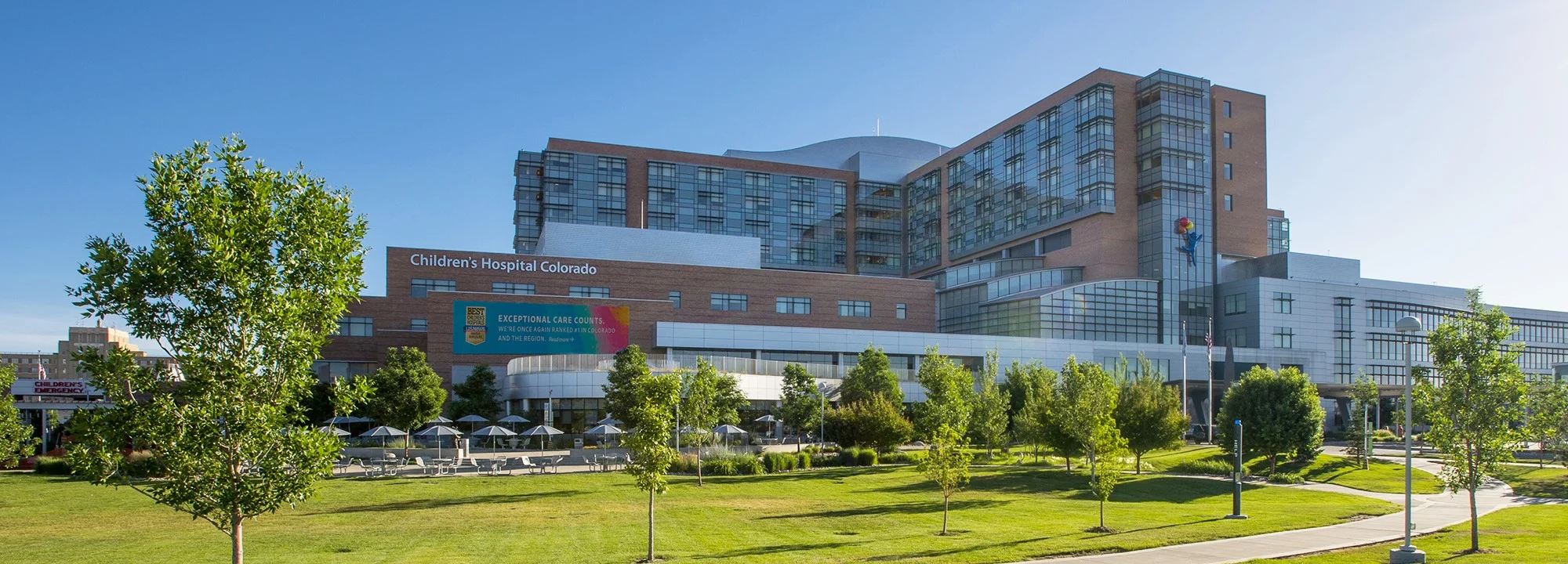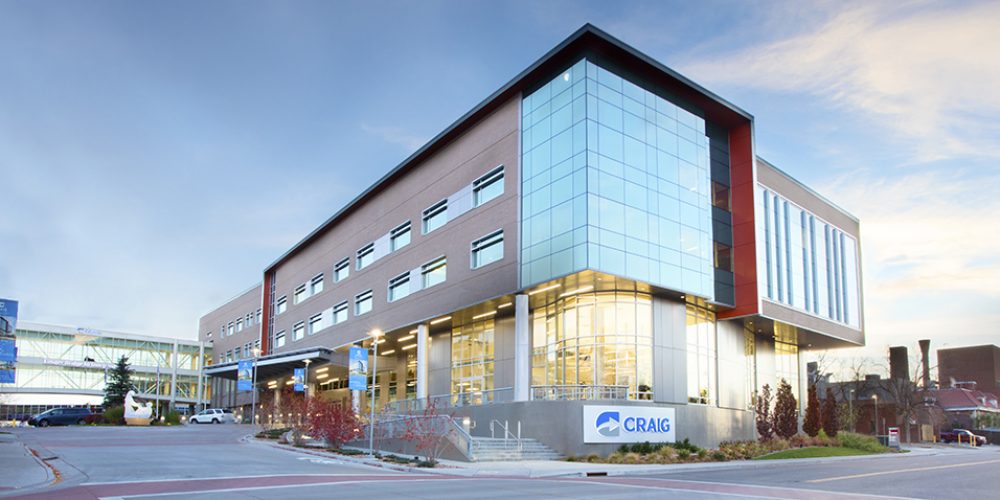Call & Rotations
The PM&R Residency program offers a robust training program at various sites. Please see the breakdown of rotations by site below. Please note that all rotations are 2 months in length.
University of Colorado Hospital (UCH) is a tertiary medical center and the primary teaching hospital for the University of Colorado School of Medicine (CUSOM) programs. It is located at CU Anschutz and serves as a primary site. Full time faculty from CUSOM are assigned to the clinical service and are responsible for resident/fellow supervision.
The UCHealth Inpatient Rehabilitation Unit has 12 beds and a full-time inpatient director. Unique patient populations on the inpatient unit include burn, transplant, joint replacement, stroke, and brain tumor rehabilitation. This team also manages a PM&R consult service for the hospital as well. The rehab service has a strong presence in the ICU promoting early mobility and early intervention for SCI, TBI, and trauma patients.
The UCH Spine Center is a multidisciplinary center housing physiatry, neurosurgery, orthopedic surgery, anesthesiology, and pain psychology, all dedicated to providing high quality, evidence-based, multidisciplinary spine care. The PM&R team focuses on spine and musculoskeletal medicine, fluoroscopy-guided interventional spine procedures, and ultrasound-guided injections.
The CU Sports Medicine Clinic clinic is part of the UCH Sports & Spine rotation and is located off campus in Denver, CO. Residents gain exposure to acute and chronic sports injuries in a multidisciplinary approach, alongside sports medicine physicians from orthopedic surgery and family medicine. Follow on Twitter and Instagram.
The CU Sports Medicine and Performance Center is housed in The Champions Center on the CU Boulder campus adjacent to the CU Buffs training room and sports complex. The center treats CU athletes, students, and Boulder community members for spine and musculoskeletal sports injuries.
The Foot and Ankle Center is an offsite clinic in Denver that provides comprehensive foot and ankle care. This clinic houses a state-of-the-art motion analysis lab, with regular musculoskeletal and neurologic gait analysis case review, as well as running and sports performance capabilities.
Rotations at this site:
- UCH Inpatient Junior: The UCH Inpatient rotation offers exposure to general rehab, burn, stroke, neuro rehab, transplant, and some SCI and TBI. Residents work with their attendings to manage the 12-bed rehab unit.
- UCH Inpatient Senior: The Inpatient senior resident co-manages with the UCH Inpatient Junior resident. This is a teaching experience for senior residents preparing to move on to the next phase of their career.
- UCH Consults: On the UCH Consult rotation the resident manages a robust rehab consult service at the University as well as exposure to many neuro rehab outpatient clinics.
- UCH Neuro/General: The UCH Neuro/General rotation is an exclusively outpatient rotation that exposes residents to neuromuscular and musculoskeletal medicine, with hands-on exposure to EMGs and an introduction to spine procedures. In addition, the resident will also spend time with physical therapists learning biomechanics and rehab programs commonly prescribed by physiatrists.
- UCH Spine Sr.: The UCH Spine rotation is an exclusively outpatient rotation that exposes residents to advanced musculoskeletal and spine care, with half-days of hands-on spine procedures 4 days per week.
- UCH Sports and Spine: The UCH Sports & Spine rotation is an exclusively outpatient rotation that exposes residents to non-operative sports medicine and spine care. The resident will spend time at numerous sports medicine clinics: UCH Sports Medicine in Denver, CU Sports Performance Center in Boulder, and the Foot and Ankle Center with exposure to the motion analysis lab.
The Rocky Mountain Regional Veteran’s Affairs Medical Center (VA) provides experience in the provision of care in a government setting for all of Colorado. Full time faculty from the University of Colorado School of Medicine are assigned to the clinical service and are responsible for resident/fellow supervision. Clinical experiences provided to residents include inpatient, consult, outpatient, and electrodiagnostic training. Outpatient clinics cover musculoskeletal medicine, neuromuscular medicine, spinal cord injury, multiple sclerosis, and brain injury). In 2019, the RMR-VAMC relocated to CU Anschutz from their downtown campus and opened a state of the art, regional Spinal Cord Injury (SCI) unit providing specialized care for the entire region.
Rotations at this site:
- VA Inpatient: The VA Inpatient rotation offers exposure to general rehab, stroke, amputee, brain injury, and SCI.
- VA Consult/MSK: On the VA Consult rotation, the resident manages a robust rehab consult service while also gaining exposure to neurorehabilitation and musculoskeletal outpatient clinics.
- VA EMG: The VA EMG rotation is where our residents receive a majority of their EMG training.
- VA MSK: The VA MSK rotation is an exclusively outpatient rotation that exposes residents to musculoskeletal medicine including ultrasound-guided injections and interventional spine procedures.
- VA Neuro: The VA Neuro rotation exposes the resident to outpatient brain injury, amputee care, and general musculoskeletal clinics.
- VA SCI: The VA SCI rotation is an inpatient service of up to 12 patients, typically treating comorbidities of chronic and non-traumatic SCI.
- VA SCI 2: The VA SCI2 rotation is a mix of 1 month of inpatient and 1 month of outpatient SCI that includes outpatient annual SCI evaluations, ALS care, wound care, and procedures including neurotoxin injections and peripheral joint injections.
Denver Health (DH) is a Level 1 Trauma Center with a diverse patient population. Full-time faculty from the University of Colorado School of Medicine are assigned to the clinical service and are responsible for resident/fellow supervision. Denver Health provides resident experiences in both outpatient rehabilitation and consult services. Residents receive extensive experience in the care of adults and adolescents with brain injury, spinal cord injury, amputation, and polytrauma. The outpatient clinics involve general rehabilitation, durable medical equipment prescription (wheelchairs, orthotics, and prosthetics), musculoskeletal medicine, and electromyography.
Rotations at this site:
- DH Consult Rotation: The DH Consult rotation offers experience on a busy consult service managing consults for new TBI, new SCI, amputee, and socioeconomically complex patients.
- DH Outpatient Rotation: The DH outpatient rotation offers a combination of outpatient clinics (focusing on neurorehabilitation, musculoskeletal medicine, and electromyography) and consults.
Children’s Hospital Colorado (CHCO) serves as the tertiary referral center for pediatrics across the Rocky Mountain region. Full time faculty from the University of Colorado School of Medicine are assigned to the clinical service and are responsible for resident/fellow supervision. CHCO is located adjacent to the University of Colorado Hospital (at CU Anschutz) and offers a full range of pediatric services. CHCO has 400+ beds and typically 13 inpatient rehabilitation beds. The resident educational experience at Children's Hospital includes a month each of inpatient, outpatient and consult pediatric rehabilitation experience. The rotation provides both an inpatient and outpatient exposure to Pediatric Physiatry, seeing a plethora of diagnoses including spina bifida, cerebral palsy, and neuromuscular disease. This PM&R resident rotation is consistently ranked one of the program's top clinical experiences.
Rotations at this site:
- CHCO 1 Rotation - Inpatient Focus: The pediatric rehabilitation rotation exposes residents to both the inpatient service as well as outpatient clinics. The 2 month rotation is generally split into 1 month of inpatient coverage and 1 month of outpatient clinics. The rotation will expose residents to many areas of pediatric rehab medicine including acute management of various rehabilitation diagnoses (including TBI, SCI, stroke, encephalitis, and more), and our vast array of outpatient clinics includes involvement in our nationally recognized multidisciplinary clinics with exposure to cerebral palsy, spina bifida, acquired brain injury and concussion, stroke, surgical tone management, pediatric EMG, procedures focused on spasticity management, and more!
- CHCO 2 Rotation - Outpatient Focus: The pediatric rehabilitation outpatient rotation exposes residents to the many outpatient clinics CHCO has to offer, in addition to 2-4 weeks of consult exposure. The rotation will highlight the vast array of outpatient clinics including involvement in our nationally recognized multidisciplinary clinics with exposure to cerebral palsy, spina bifida, acquired brain injury and concussion, stroke, surgical tone management, pediatric EMG, procedures focused on spasticity management, and more!
Craig Hospital is a free-standing rehabilitation hospital focused on the care of spinal cord injury and brain injury. Craig is consistently rated as one of the top 10 rehabilitation hospitals by U.S. News and World Report. Attendings at Craig Hospital have clinical faculty appointments at the University of Colorado School of Medicine and are all board-certified in either Spinal Cord Injury Medicine or Brain Injury Medicine. The Craig faculty also teach the spinal cord injury and traumatic brain injury modules in the didactic curriculum. Craig Hospital houses two rotations for the residents: Spinal Cord Injury and Brain Injury. These rotations allow for the residents to be exposed to the acute, inpatient, and chronic care of SCI and TBI patients, under the direction of the supervising faculty. These rotations continue to be very popular among the residents, not only for the medical knowledge and patient caree that they are exposed to, but also for the opportunity to experience how PM&R is practiced in a health care system outside the traditional academic medical center.
Rotations at this site:
- Craig Spinal Cord Injury (SCI) Rotation: The Craig SCI unit exposes residents to world- renowned spinal cord injury care in both inpatient and outpatient settings. The resident will get to work with the Spinal Cord Injury fellow as well during this rotation.
- Craig Brain Injury (BI) Rotation: Craig Hospital exposes residents to world-renowned brain injury care in both inpatient and outpatient settings.
Residents take home-call at either UCH or the VA.
Call is Friday to Friday
Number of call weeks:
- PGY-2: 10 weeks
- PGY-3: 5-7 weeks
- PGY-4: 2 weeks
Procedure Exposure
Because of so much clinical and site variety, residents receive excellent, unparalleled autonomy and exposure to procedures.
| Procedure | ACGME Minimum | CU PM&R Average |
| EMGs | 200 | 200 |
| Epidural Injections | 5 | 100-150* |
| Facet, SI joint, nerve blocks | 5 | 75-100* |
| Periph joint/intra artic inj/tendon sheath/bursa inj | 20 | 100* |
| Botulinum toxin injections | 20 | 40 |
| Ultrasound | 10 | 75-100* |
*Note: Sports, spine and pain interested residents consistently PERFORM >200 axial injections each (epidurals, facet injections, etc.) and >100 ultrasound-guided peripheral injections.




